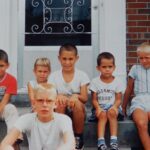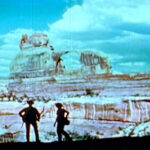
I have a granddaughter about the same age as this little one, and that makes this child very close, and very dear to me. I can’t explain it, but I’m carried away with deep emotion.
I realize that for a thousand years this little one has slept in the shadow of this rock shelter, and now, quite by accident, I’m holding her little face in my hands. It makes me wonder, what twist of fate has brought us together here this morning. How did this happen, and why? I have a hundred questions. Who was this child? What was her name? How did she die? Why was she buried here?









